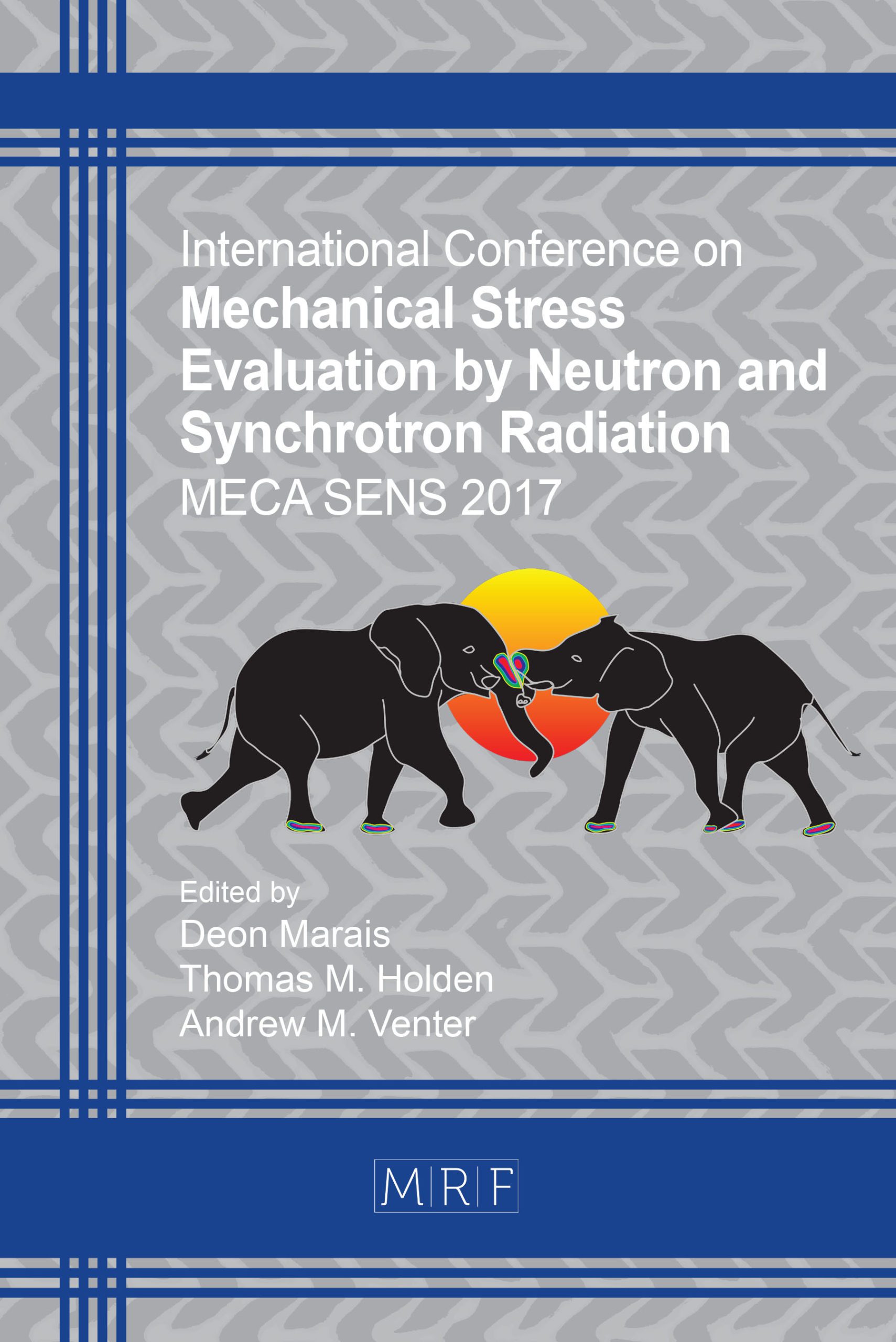Investigating the Residual Stress Distribution in Selective Laser Melting Produced Ti-6Al-4V using Neutron Diffraction
L.S. Anderson, A.M. Venter, B. Vrancken, D. Marais, J. van Humbeeck, T.H. Becker
download PDFThe Selective Laser Melting (SLM) process makes rapid manufacture of both prototype and structural components possible for a variety of metals. However, high residual stresses are inherent to the building process and can pose a number of problems; including part distortion, cracking and a reduction in the components’ mechanical strength and fatigue life. Exact stress distributions through the part volume are often not known as the methods commonly used to measure residual stresses are surface or near surface stresses. As such, the influence of build parameters, residual stresses on resultant SLM-produced part integrity is not understood. Neutron diffraction allows for the measurement of residual stress through the volume of a part using measured lattice strains, thereby providing a tool to gain insight into the SLM process and the formation of residual stresses. In this work, neutron diffraction was used to determine the distribution of residual stress in a set of rectangular SLM-produced Ti-6Al-4V samples. Results show that an increase in layer thickness reduces the stress gradients in the part. There is also evidence that changing the exposure strategy can prevent stresses from developing along a preferential axis, making a more homogeneous stress field.
Keywords
Neutron Diffraction, Selective Laser Melting, Residual Stress, Additive Manufacturing, Ti-6Al-4V
Published online 4/20/2018, 6 pages
Copyright © 2018 by the author(s)
Published under license by Materials Research Forum LLC., Millersville PA, USA
Citation: L.S. Anderson, A.M. Venter, B. Vrancken, D. Marais, J. van Humbeeck, T.H. Becker, ‘Investigating the Residual Stress Distribution in Selective Laser Melting Produced Ti-6Al-4V using Neutron Diffraction’, Materials Research Proceedings, Vol. 4, pp 73-78, 2018
DOI: http://dx.doi.org/10.21741/9781945291678-11
The article was published as article 11 of the book
![]() Content from this work may be used under the terms of the Creative Commons Attribution 3.0 licence. Any further distribution of this work must maintain attribution to the author(s) and the title of the work, journal citation and DOI.
Content from this work may be used under the terms of the Creative Commons Attribution 3.0 licence. Any further distribution of this work must maintain attribution to the author(s) and the title of the work, journal citation and DOI.
References
[1] M. Simonelli, Microstructure Evolution and Mechanical Properties of Selective Laser Melted Ti-6Al-4V, Loughborough University, 2014.
[2] H. J. Rack and J. I. Qazi, Titanium alloys for biomedical applications, Mater. Sci. Eng. C, 26, 8 (2006), 1269–1277. https://doi.org/10.1016/j.msec.2005.08.032
[3] B. Ferrar, L. Mullen, E. Jones, R. Stamp, and C. J. Sutcliffe, Gas flow effects on selective laser melting (SLM) manufacturing performance, J. Mater. Process. Tech., 212, 2 (2012), 355–364. https://doi.org/10.1016/j.jmatprotec.2011.09.020
[4] D. Herzog, V. Seyda, E. Wycisk, and C. Emmelmann, Additive manufacturing of metals, Acta Mater., (2016), 117, 371–392. https://doi.org/10.1016/j.actamat.2016.07.019
[5] S. Bremen, W. Meiners, and A. Diatlov, Selective Laser Melting A manufacturing technology for the future, Laser Tech. J., 9, 2 (2012), 33–38. https://doi.org/10.1002/latj.201290018
[6] M. F. Zaeh and G. Branner, Investigations on residual stresses and deformations in selective laser melting, Prod. Eng., 4, 1 2009, 35–45. https://doi.org/10.1007/s11740-009-0192-y
[7] P. Mercelis and J.-P. Kruth, Residual stresses in selective laser sintering and selective laser melting, Rapid Prototyp. J., 12, 5,(2006), 254–265.
[8] M. J. Park, H. N. Yang, D. Y. Jang, J. S. Kim, and T. E. Jin, Residual stress measurement on welded specimen by neutron diffraction, J. of Mater. Process. Tech., 155-156, (2004), 1171–1177. https://doi.org/10.1016/j.jmatprotec.2004.04.393
[9] C. Casavola, S. L. Campanelli, and C. Pappalettere, Preliminary investigation on distribution of residual stress generated by the selective laser melting process, J. Strain Anal., 44 (2009), 93–105. https://doi.org/10.1243/03093247JSA464































